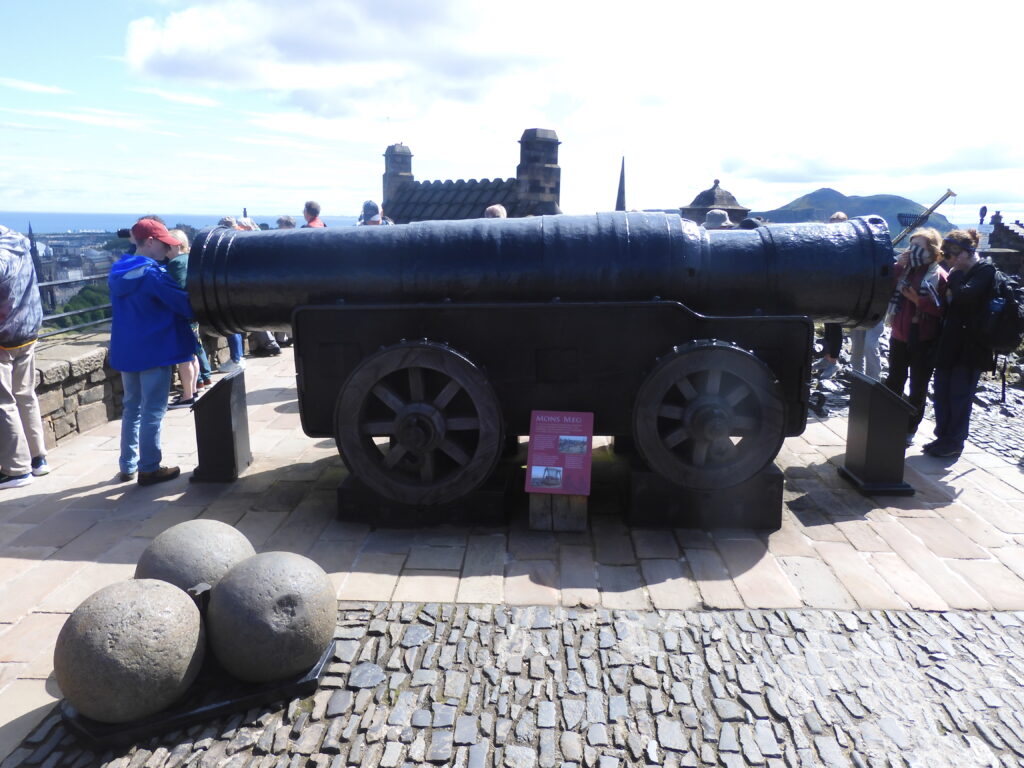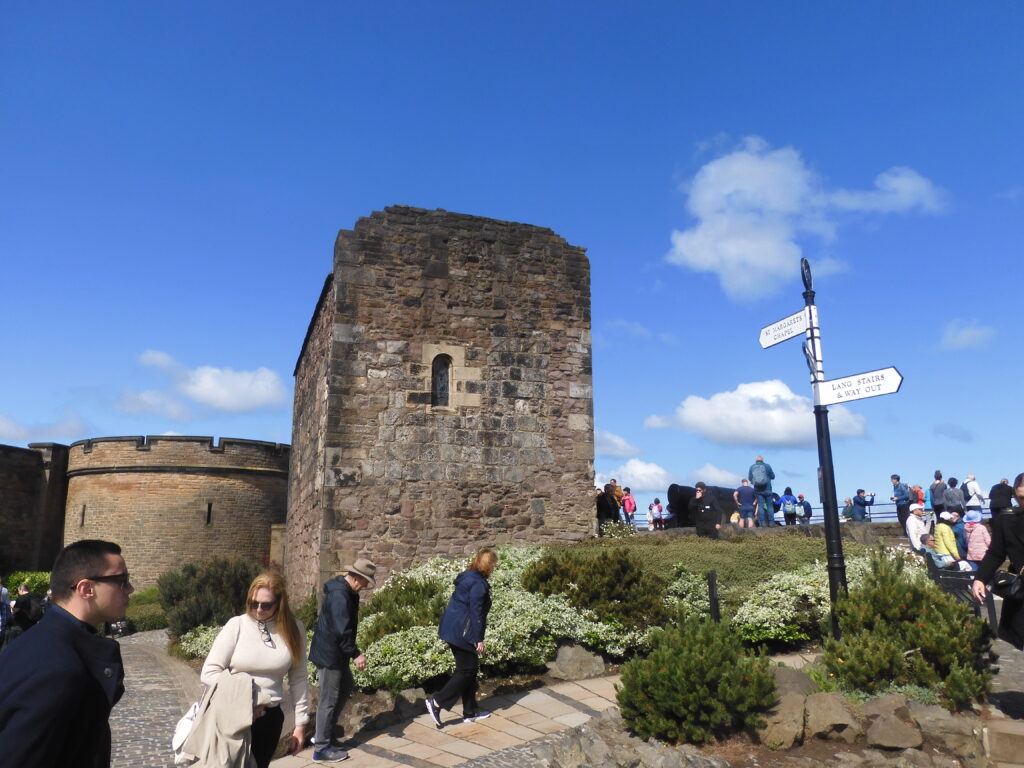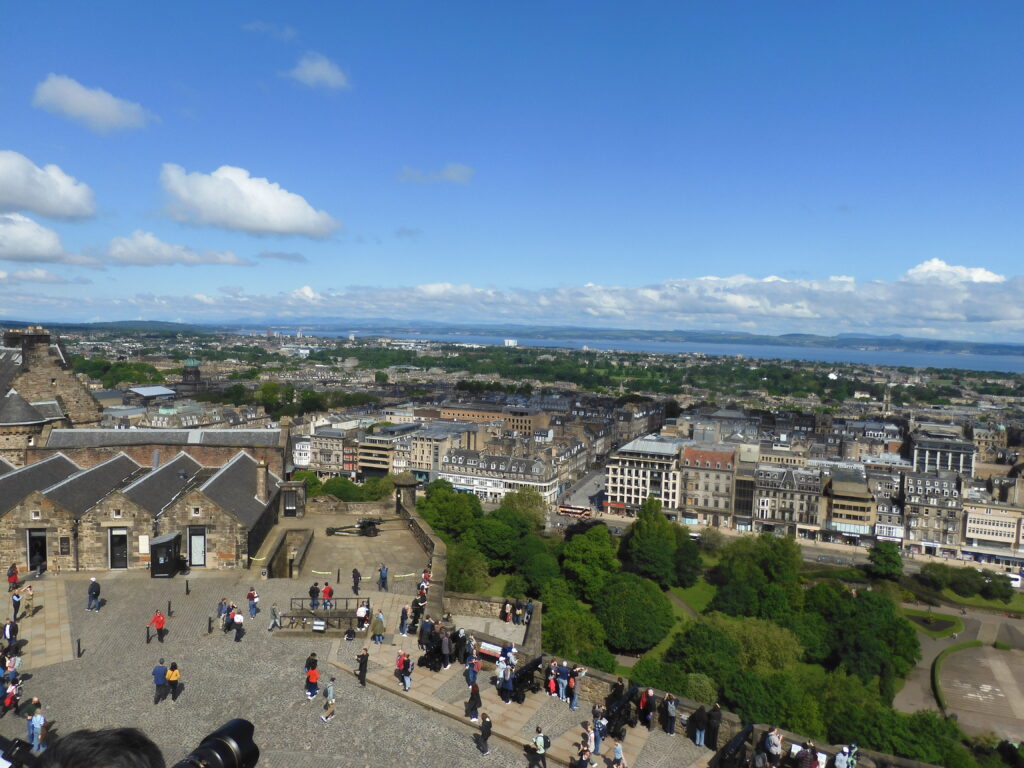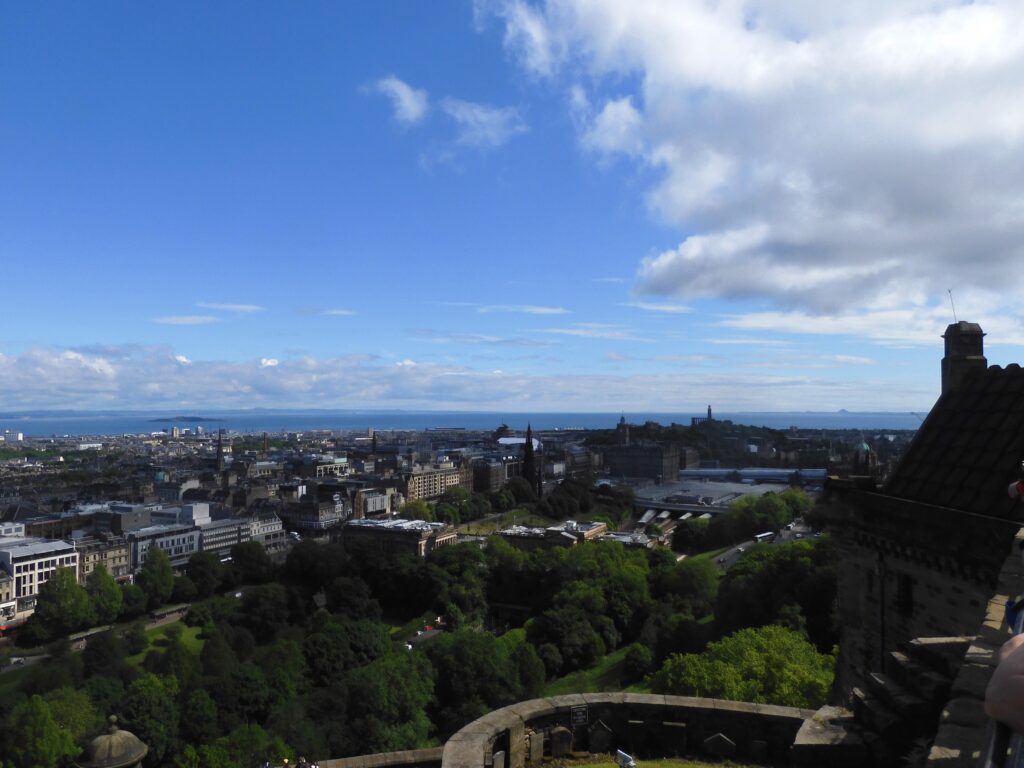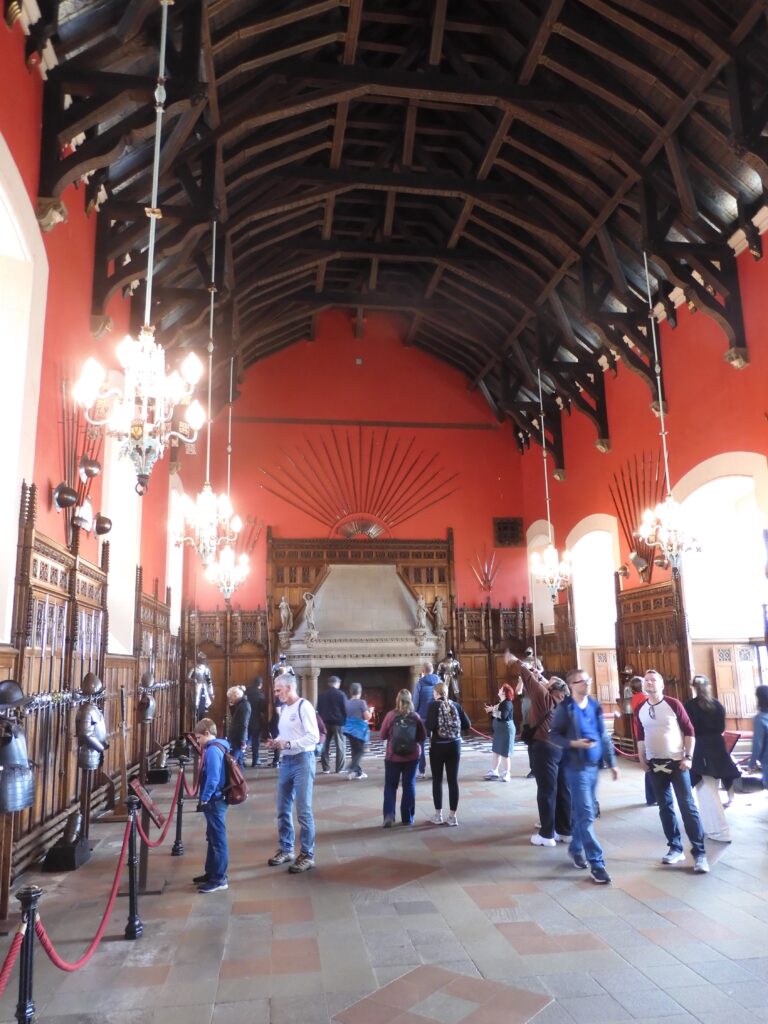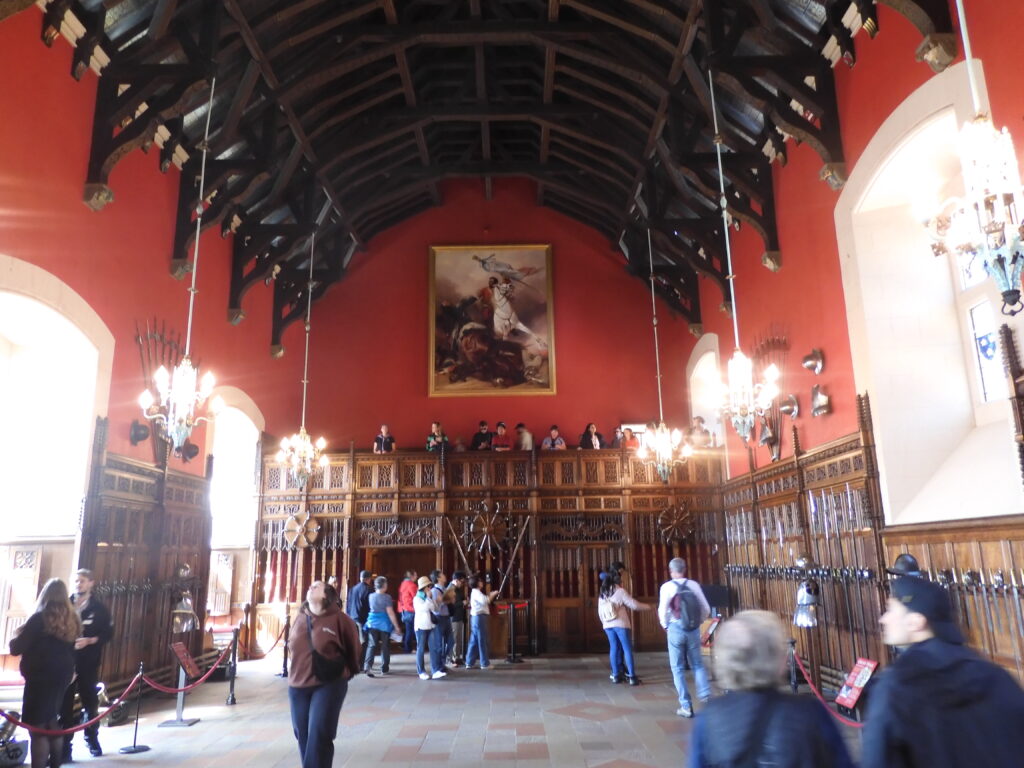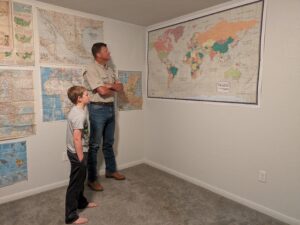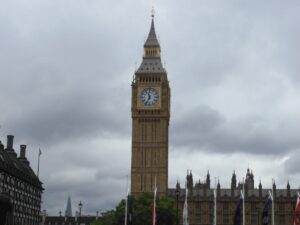Stirling
...and bits of Edinburgh, too
Caleb and I got some sleep on the overnight flight from Toronto to Edinburgh. Stephanie and Kimberly claim not to have slept much. I planned the red eye thinking that as painful as a short sleep night might be, it could help us adjust more quickly to the time change. If we were tired, perhaps we would be more likely to fall asleep at what would be 4:00 p.m. Texas time (10:00 in Scotland). It did make for some grumpy travelers on Sunday. Since our flight was delayed an hour leaving Toronto, it was 11:00 a.m. before we arrived in Edinburgh. I had scoped out the local Church of Christ and concluded it would take about half an hour to drive there from the airport. We would have been just in time for church had our flight arrived on schedule. By the time we deplaned and caught the shuttle to our car rental, it was clear we would not make it to worship in time. I decided to head that way anyhow, and sure enough, we arrived just about as worship was letting out.
As it turned out, the church stayed after to learn new songs one Sunday a month, so they were still at the building. We went in and helped them learn the parts to “Anywhere is Home,” which felt apropos having recently completed Tsh Oxenreider’s “At Home in the World.” (link) We visited with the brothers there for a while after the singing. There were several locals there, and many more West Africans. We met folks there from Ghana and Nigeria. The preacher was from the latter. The church had been planted by a brother from La Marque, Texas about 50 years prior. I am glad we decided to head there even though it was obvious we would be late.
We headed next to the National Museum of Scotland. We arrived there at three and stayed until in closed at 5:00. This museum was free, and it was an amazingly diverse, busy museum. Like a miniature Smithsonian, they had wings dedicated to Natural History, Science and Technology, the History of Scotland, Ancient Cultures, and another one or two areas I am failing to remember. There were six levels, and an amazing view of the Edinburgh skyline from the rooftop terrace. There were many interesting and unique Scottish artifacts there. Anyone who was alive during the 1990s will remember the great commotion around the first successfully cloned animal, a sheep named Dolly. She is there, preserved by a taxidermist for everyone to see. For me, the highlight was a collection of 11 of the Isle of Lewis chessmen. These are ivory hand carved chess pieces that were lost in a shipwreck while being transported to the British Isles from Norway in the 12th century. These are my favorite style of chessmen.
The timing was good after the museum closed for us to drive out to Stirling for our stay at the Holiday Inn Express. We checked in, then headed for a local pub to have our go at some Scottish fare. Our pub was out of about everything, including fish and chips! We took what they had as we were too hungry to start our supper expedition from scratch. Everyone was tired and hangry. The navigation was not going well, and we needed some rest. The only thing that went right after the museum was that we were all so tired that no one had any trouble going to bed at what would have been a very early hour in Texas or even Toronto.
I even slept a full 8 ½ hours before getting up to run at 6:30. I got a 5k in, then walked about to cool down for some time. We ate a hearty breakfast of eggs, bacon, sausage, and baked beans before setting out on our sight seeing mission for the day. I had learned that Doune Castle would be closed for a week starting Tuesday, so we went there first. I was completely unaware that much of “Monty Python and the Holy Grail” was filmed there. It was an impressive castle in any case. Many of the tourists there the day we visited were most interested in learning the castle’s ties to Outlander and Game of Thrones. I don’t know why, but I am always mildly disappointed that so many people are more concerned with a modern pop culture tie than the historic site itself. I suppose if that helps aid in the preservation of the historic site, then the more the merrier. This castle was home to Robert Stewart the Duke of Albany, who, in the late 14th and early 15th centuries was known as the “uncrowned king of Scotland” for the power he wielded. It is a pretty building with a good audio tour that melds the historical importance with the Python references making for an entertaining presentation. Since the other pop culture ties came along later, additional segments were built on later to explain how Outlander used the site. They haven’t gotten around to making audio units for Game of Thrones. There is also a very interesting American tie to Doune Castle. When a large Jacobite force returned to the castle during the 1745 Jacobite uprising, several local supporters of the government cause were imprisoned here, including the Reverend John Witherspoon. They made a famous escape by descending a wall with a rope made of bedsheets. Witherspoon went on to come to America where he was a member of the Continental Congress and a signer of the Declaration of Independence.
We went from Doune Castle to Dunblane where we visited the Cathedral, the Library, and the local museum. The first was on our agenda, and the others were thrown-in discoveries. The bones of the cathedral were built in the 13th century. We got an interesting explanation from a very knowledgeable director there of the different schisms in the Church of Scotland. It was a beautiful cathedral. I have always loved Gothic architecture in cathedrals. You can see vestiges of the church’s Catholic roots, and evidence of how it became Presbyterian. The church was too small to need the whole building for the middle part of its history, and later was refurbished to house the growing church as the town grew after the railroad came through in the 19th century. This was a nice stop, worthy of about a 45 minute visit. The library and local museum are small but nice. The library’s caretakers were particularly enthusiastic about their site. This was the first purpose-built library in Scotland. It has oodles of vellum books and a first edition of Adam Smith’s “The Wealth of Nations.” Smith was an Enlightenment thinker and the father of modern capitalism. “The Wealth of Nations” is his treatise, and is the original explanation of market forces such as supply and demand, the invisible hand, etc. He explains how meddling governments so often foul up free markets. Prior to this work, the European colonial economies were all based on Mercantilist thought. They believed that one country could only become wealthy at the expense of another. There was no consideration of the mutual benefits of free trade relationships. This drove colonization and all of the trade restrictions placed on Britain’s North American colonies, and the disagreements that led to the American Revolution. Who knows what might have happened if Smith’s ideas had been adopted a few decades earlier. A first edition “The Wealth of Nations” is a priceless and extremely important book.
Not wanting to miss the noted highlights on our list, we then drove to the visitor center at the site of the Battle of Bannockburn. You can walk the site here free of charge, but they put on an entertaining immersive film program that we wanted to see. We considered this worth the time and the fee. It concisely explained the events leading up to the Scottish Wars of Independence. Bannockburn was Scotland’s culminating victory in this conflict, the reason for its importance. I think it was good for Caleb and Kimberly to see it presented this way. They are probably more likely to remember it than if they had just heard it from me or read it from a placard. We walked out to a big monument to Robert the Bruce after the presentation. They have many replica weapons and a room where children can try on garments and armor appropriate to the era. Caleb thought this was great fun.
I didn’t know how long it would take to see Cambuskenneth Abbey, so I headed there next. It is essentially a ruin with an intact bell tower, so it didn’t take long to visit. It is a beautiful site, and also has the remains of King James III of Scotland. You can walk the grounds as long as you like and view the peaceful countryside. Since the site was not a huge time eater, we added the Church of the Holy Rude to the agenda before supper. The Church of the Holy Rude has 14th century roots, but much of the existing décor is much later. Mary Queen of Scots worshiped here, John Knox preached here, and it is the only extant church in Scotland to have witnessed a coronation. As impressive as all that history is, I think I was more impressed that the building’s medieval oaken roof is intact, held together entirely with wooden pegs. It is another beautiful building. It is nearly co-located with the Stirling Castle and the Old Town Jail. The latter two we will visit tomorrow, but they could easily have been done in a group with better planning on my part. On the other hand, nothing we have seen yet has been more than 10 miles form the motel.
We headed to Fletcher’s for an early dinner. There was a culminating battle in the Family Navigation War en route, and I was worried that our marriage might not return home intact, or at least that we would only be a party of three for supper. Fortunately, Stephanie was able to overcome her anger with me and we enjoyed several traditional Scottish items. I decided to try Cullen Skink, which is a delicious haddock soup. I ordered venison, primarily because it was one of the few things that came with haggis, and I wanted to try haggis. Haggis is surprisingly delicious, if you can get by knowing the ingredients. My venison was ok, but like a lot of food in the UK, it was not especially pungent. We were back for an early night. The kids watched a Spider Man movie, Stephanie decompressed, and I went down to the lounge to organize photos and journal about what we had seen today.
(Continued)
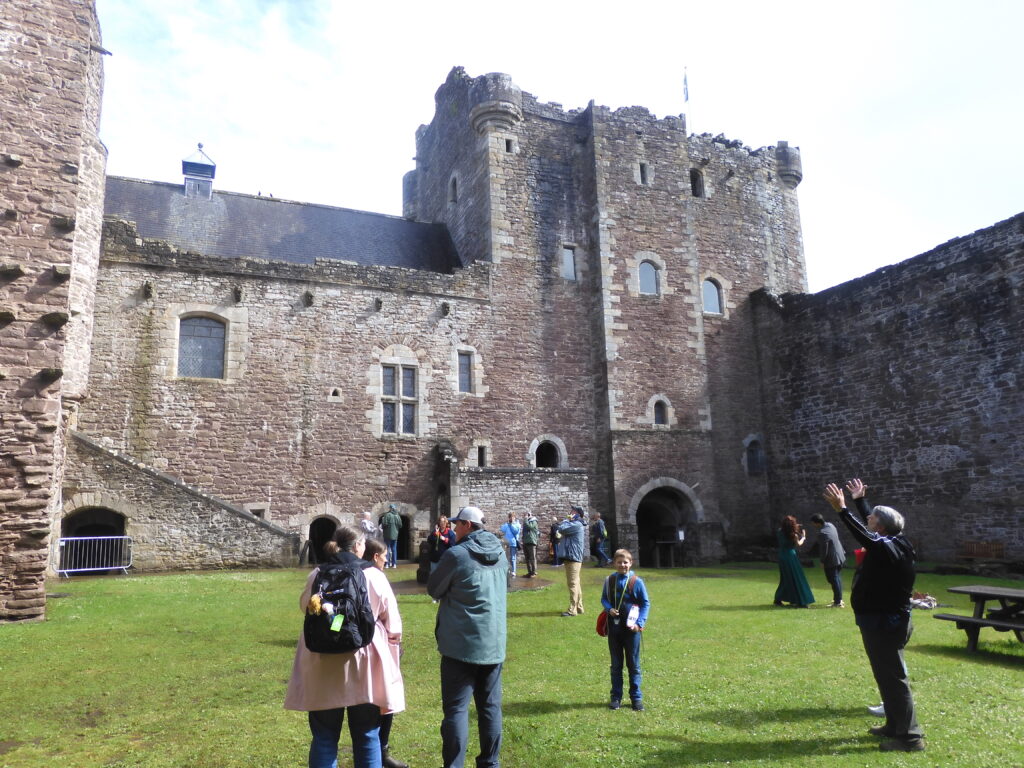
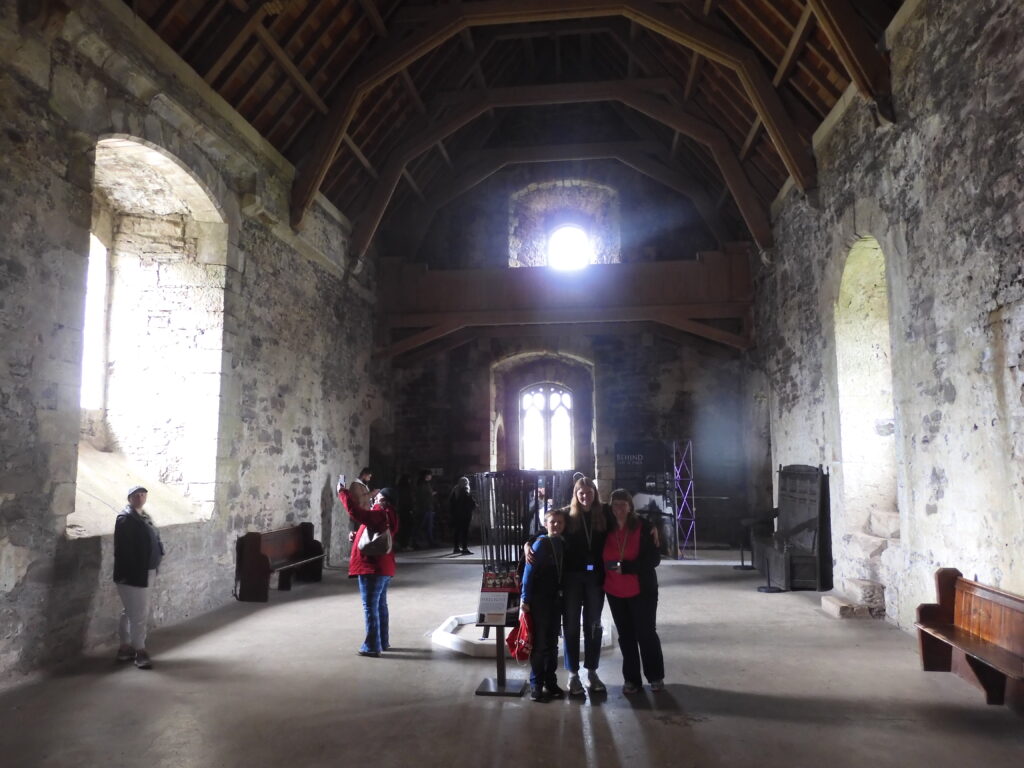
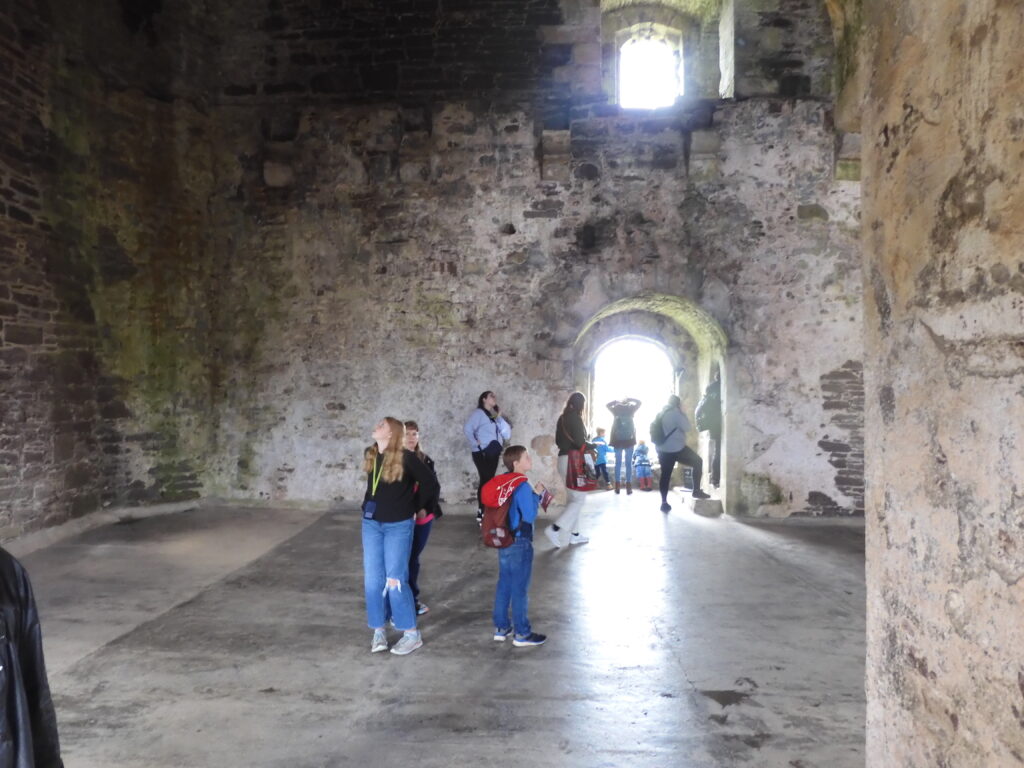
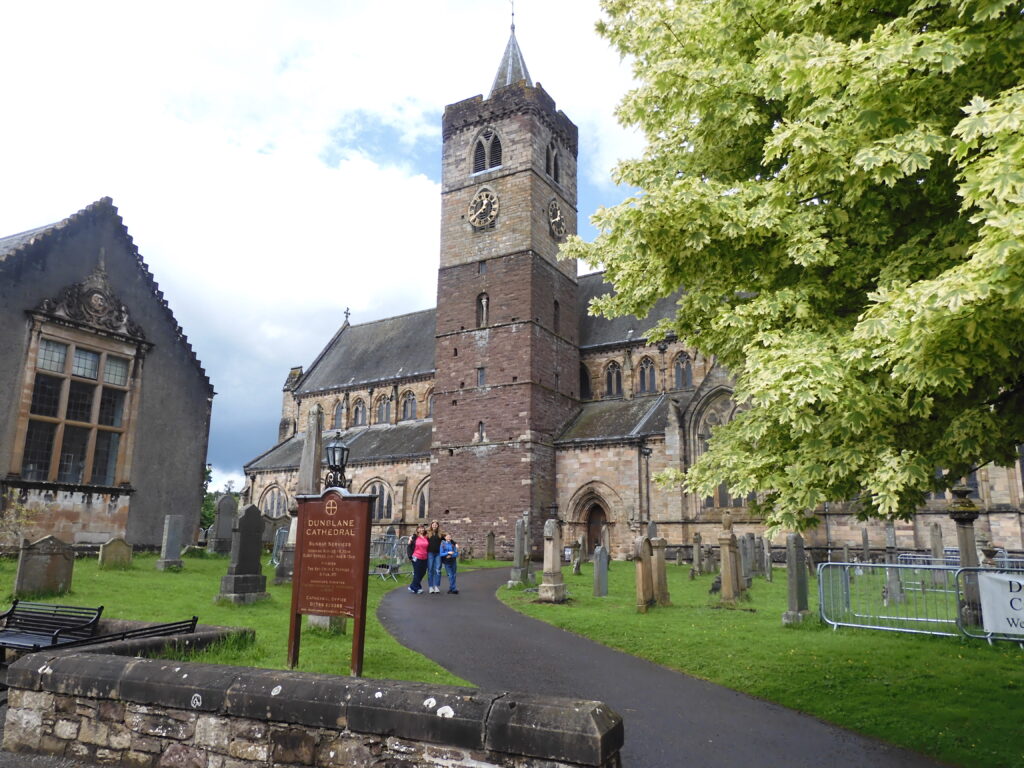
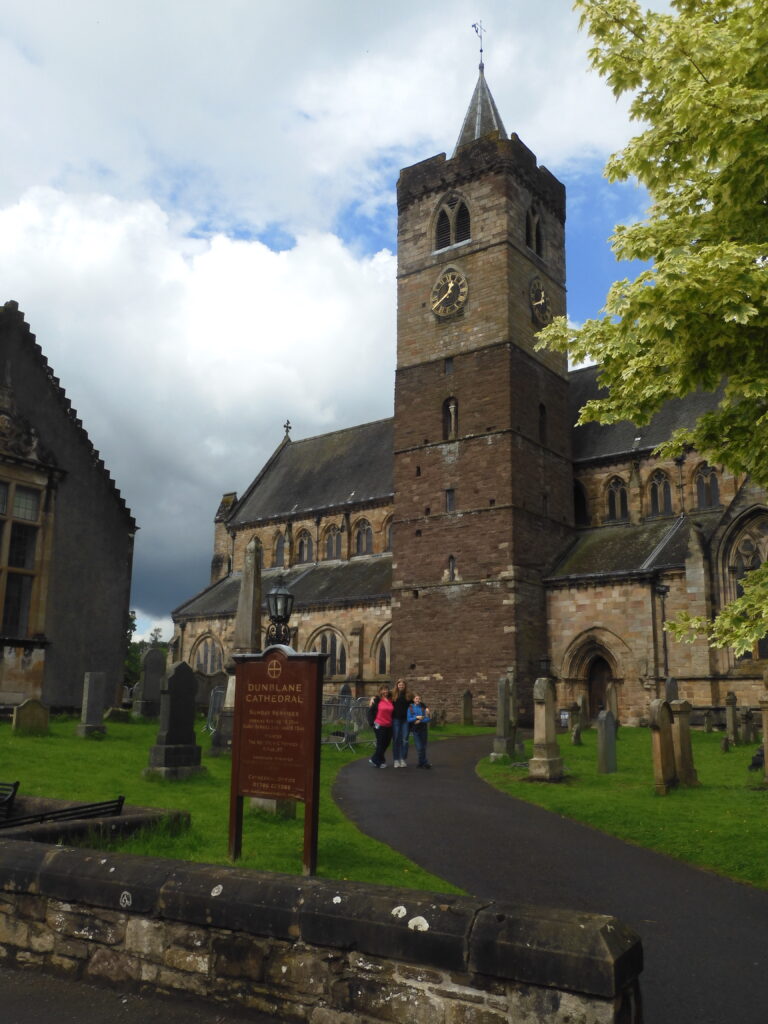
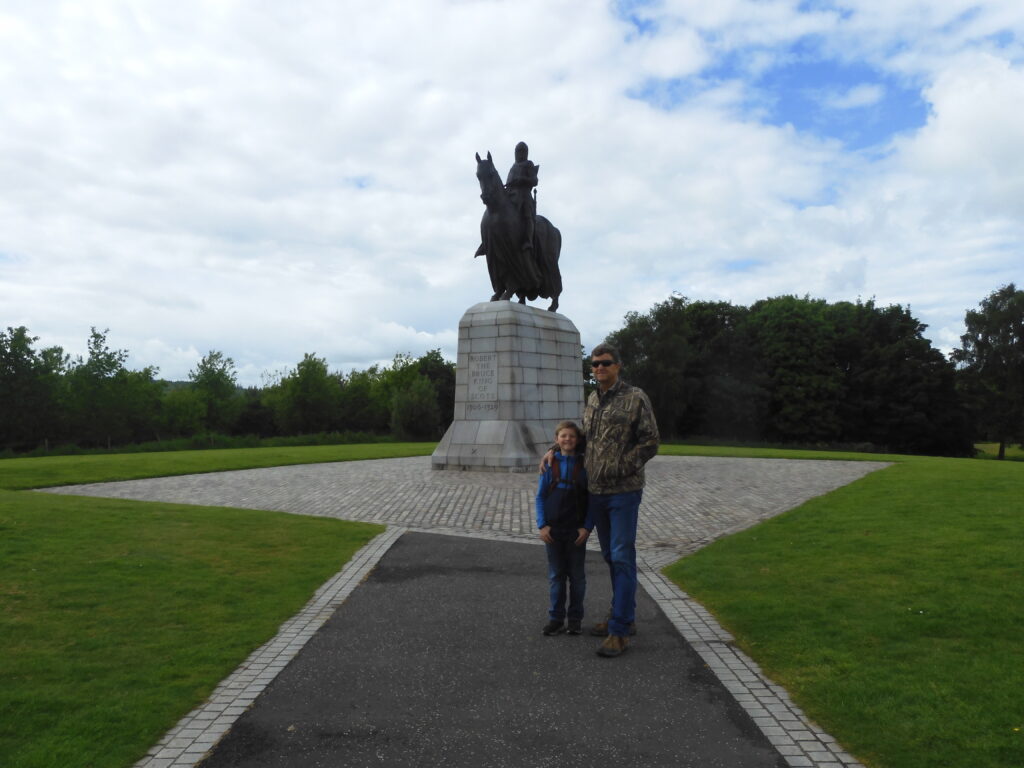
I didn’t sleep all that well last night, and was not up quite as early this morning. I planned on running at a slower pace for four miles, but that turned into five as I ran a penalty mile for taking a wrong turn on the way home. I did see the Stirling Bridge battle site, though. The bridge that had been up in William Wallace and Andrew de Moray’s time was a narrow, 11th century wood affair. It was replaced in with a still narrow stone bridge in the 15th century which exists now as the “old bridge.” There is not a lot to see there. I got back in time for a hearty later breakfast before our site seeing agenda for the day.
Our first stop was Stirling Castle. This was an extremely important strategic point for the control of Scotland. Scotland could be reached by land only via a bridge over the River Forth at Stirling. The castle and town here changed hands many times during the Scottish Wars of Independence. Unfortunately, almost nothing of the castle from that era still exists. Robert the Bruce was not confident in his ability to hold the castle out of English hands after his victory at Bannockburn and thus razed the place so it could not be recaptured and used against Scotland in future conflicts.
Thus, nearly all of the architecture at the current site dates from the Stewart kings James IV, V, VI, or later. Many sport Renaissance themes of Greek gods and their supporting symbolism. The innards of several buildings, including palace apartments built by James V were converted to military barracks during the Victorian era. It wasn’t until the late 20th century that Historic Scotland acquired the site and sought to restore them roughly to their Stewart era appearance. While the architecture is impressive, the interior restorations – particularly in terms of wall art, etc. – don’t always appear to be even professional replicas. For this reason, I honestly enjoyed visiting Doune a bit more. The castle was smaller, and there was less “going on” there, but what was there was period correct, at least to some very old date when it was last in use.
There is an interesting (to me) Argyll and Southerland Highlander Regimental Museum. These units were active from the 18th century through the early 21st, and their heritage continues. They even have a tie to American history. They were apparently the only unit that didn’t turn and run in the face of withering American artillery at the Battle of New Orleans in the War of 1812. They attempted to cover the British retreat under extreme fire from Andrew Jackson’s force there. They seem to have been in just about every major British action since the Peninsular War, except maybe the Falkland Islands. There were two aged veterans with their red and white checkerboard caps visiting as I was there. I don’t think they fought Andrew Jackson, but they had some years on them. For what it’s worth, no one else found this museum interesting in the least. Even Caleb fled to the rather cartoonish kitchen displays with Stephanie and Kimberly.
We spent all morning and the early part of the afternoon at the castle. We then walked down the street to the Old Town Jail museum. This was a light-hearted, living history centered explanation of the jail that was built in Stirling as a result of early 19th century prison reform efforts. The older toll booth jail had a reputation as one of the worst in Britain. Reformers offered criminals the opportunity to learn trades and how to read, and offered a small salary for their labors while in prison so they could purchase the tools for the trades they learned upon their release. This reportedly led to a 47% reduction in the recidivism rate. Nevertheless, when the reformers left, budget cuts and a vengeful populace drove the prison system back down the path toward punishment rather than correction. So the tour kind of ended on a sour note.
Since I had already visited Stirling Bridge on my morning run, the only remaining item on our pre-canned list of things to see was the Wallace monument. If you arrive early enough in the day, you can climb the thing. We did not know this in advance, and so arrived just after the cutoff. It is probably just as well as the weather had turned Scottish on us, and not much could have been seen from that lofty vantage point anyhow.
I opted to drive back out to Dunblane to look for a small pubish place for supper. I ate the haggis again, and it was still quite good. I am convinced that most people who say haggis is disgusting haven’t actually eaten it. If you can get past the ingredients, it is delicious. This is particularly noteworthy since so much of the food in Britain is quite bland.
(Continued)
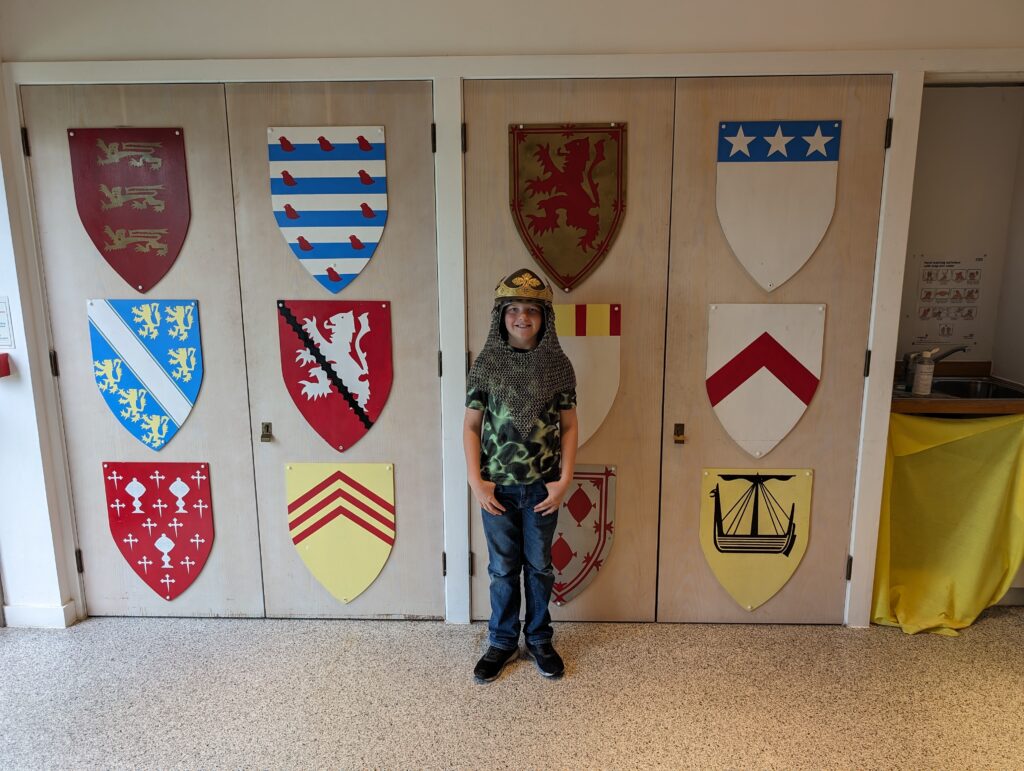
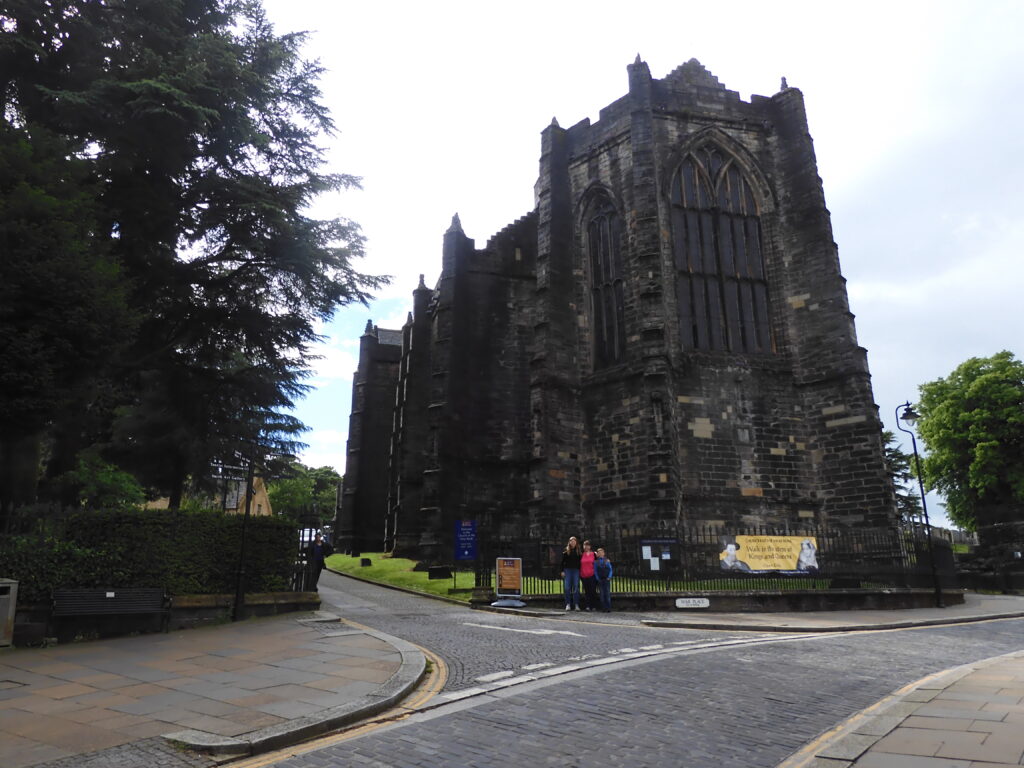
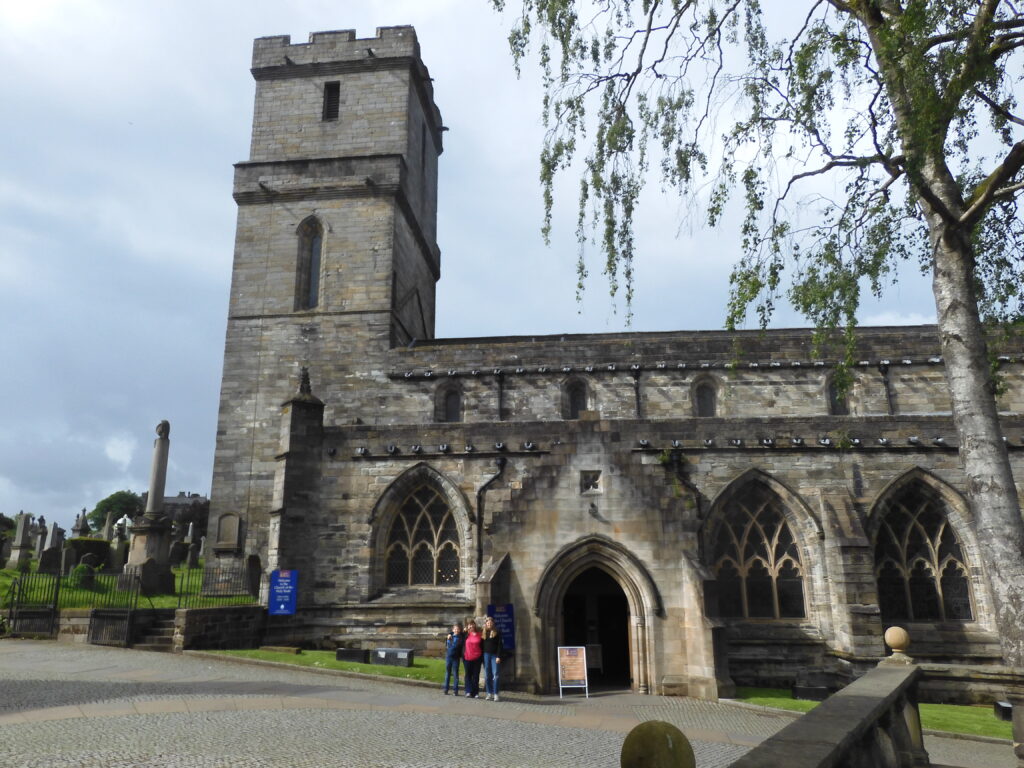



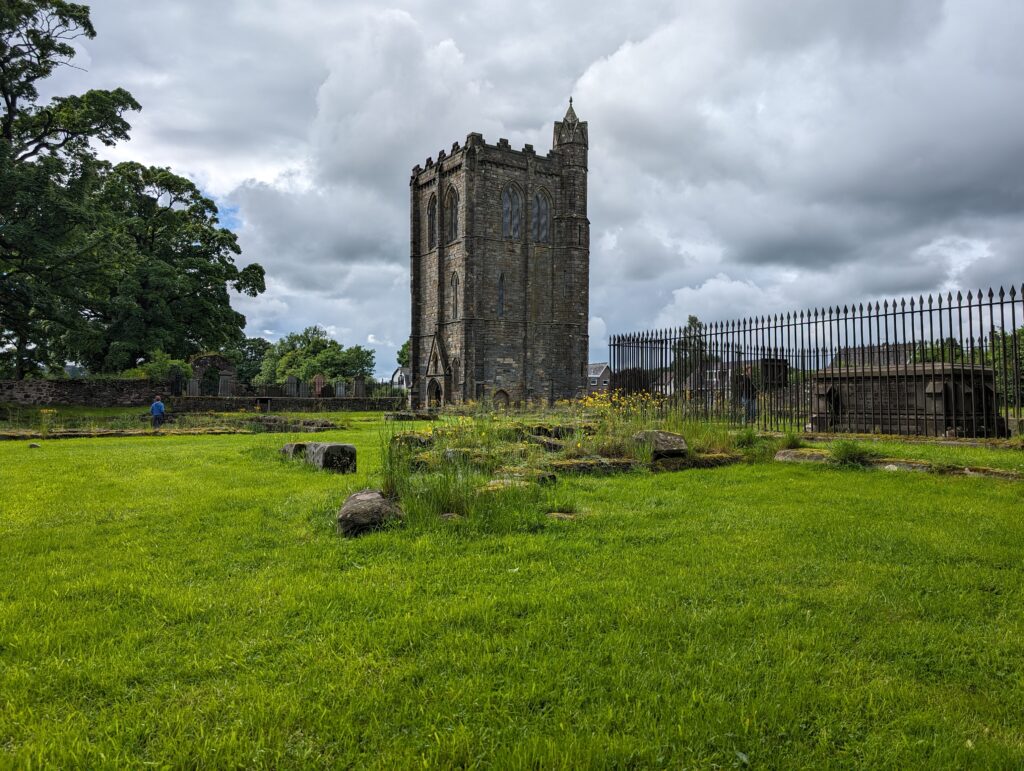
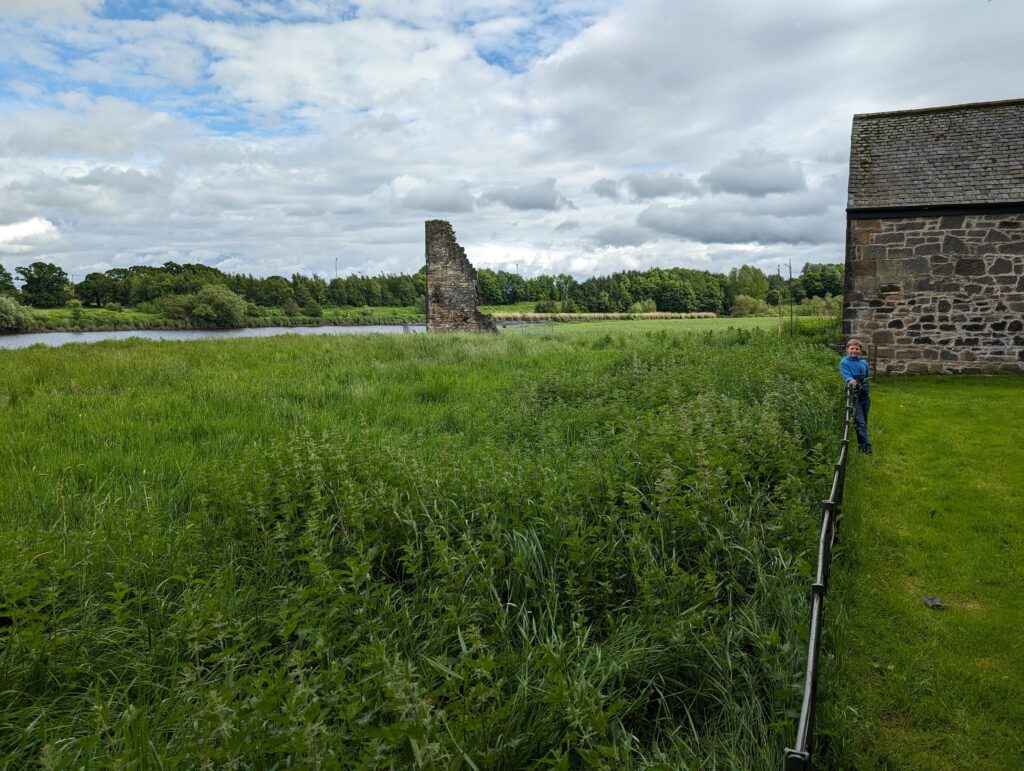
I ran only a 5k on Wednesday morning so we would have time to visit Edinburgh Castle on our way to the Waverly Train Station in Edinburgh after returning our rental car. This really didn’t accomplish much, as by the time I got back from running, no one else had stirred from their beds! We were able to make up time, however, by simply paying a little tourist tax. We gained back most of the hour we were behind time by hiring an Uber to transport us from the rental car drop off to the castle. This cost us about an additional L17 over catching a bus, so it wasn’t devastating. We further lost a bit of time returning to a hostel at the base of the hill where Edinburgh Castle sits in order to deposit bags for another L20.
The castle buildings were nice to look at, but very busy. We had been to several castles already and I suspect some of us were experiencing “castle overload.” Many of the features were similar to those of Stirling’s castle, right down to the presence of a regimental military museum specific to Scotland (this one the Royal Dragoons). We hit the highlights – the areas the girls wanted to visit – then returned to the hostel to collect our bags and catch the 1:00 high speed train to London. We were in London by suppertime.


